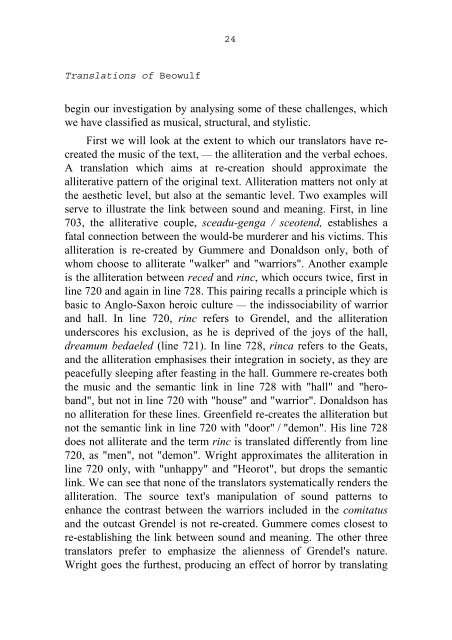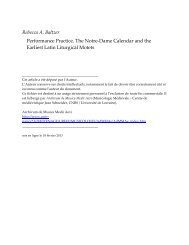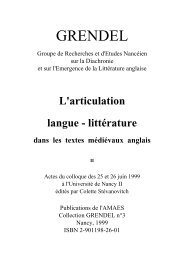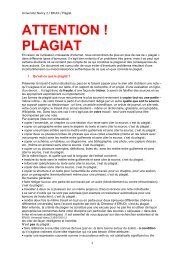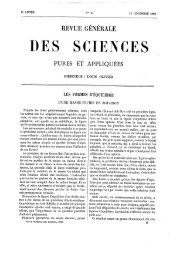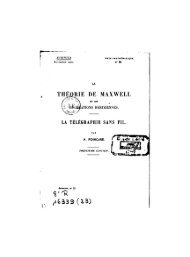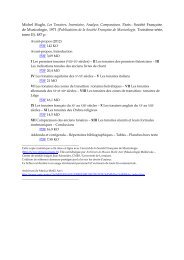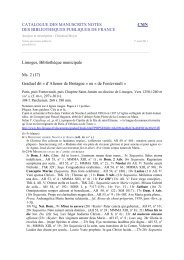3Harding-Mathieu - Université Nancy 2
3Harding-Mathieu - Université Nancy 2
3Harding-Mathieu - Université Nancy 2
Create successful ePaper yourself
Turn your PDF publications into a flip-book with our unique Google optimized e-Paper software.
Translations of Beowulf<br />
24_(12U<br />
begin our investigation by analysing some of these challenges, which<br />
we have classified as musical, structural, and stylistic.<br />
First we will look at the extent to which our translators have recreated<br />
the music of the text, — the alliteration and the verbal echoes.<br />
A translation which aims at re-creation should approximate the<br />
alliterative pattern of the original text. Alliteration matters not only at<br />
the aesthetic level, but also at the semantic level. Two examples will<br />
serve to illustrate the link between sound and meaning. First, in line<br />
703, the alliterative couple, sceadu-genga / sceotend, establishes a<br />
fatal connection between the would-be murderer and his victims. This<br />
alliteration is re-created by Gummere and Donaldson only, both of<br />
whom choose to alliterate "walker" and "warriors". Another example<br />
is the alliteration between reced and rinc, which occurs twice, first in<br />
line 720 and again in line 728. This pairing recalls a principle which is<br />
basic to Anglo-Saxon heroic culture — the indissociability of warrior<br />
and hall. In line 720, rinc refers to Grendel, and the alliteration<br />
underscores his exclusion, as he is deprived of the joys of the hall,<br />
dreamum bedaeled (line 721). In line 728, rinca refers to the Geats,<br />
and the alliteration emphasises their integration in society, as they are<br />
peacefully sleeping after feasting in the hall. Gummere re-creates both<br />
the music and the semantic link in line 728 with "hall" and "heroband",<br />
but not in line 720 with "house" and "warrior". Donaldson has<br />
no alliteration for these lines. Greenfield re-creates the alliteration but<br />
not the semantic link in line 720 with "door" / "demon". His line 728<br />
does not alliterate and the term rinc is translated differently from line<br />
720, as "men", not "demon". Wright approximates the alliteration in<br />
line 720 only, with "unhappy" and "Heorot", but drops the semantic<br />
link. We can see that none of the translators systematically renders the<br />
alliteration. The source text's manipulation of sound patterns to<br />
enhance the contrast between the warriors included in the comitatus<br />
and the outcast Grendel is not re-created. Gummere comes closest to<br />
re-establishing the link between sound and meaning. The other three<br />
translators prefer to emphasize the alienness of Grendel's nature.<br />
Wright goes the furthest, producing an effect of horror by translating


